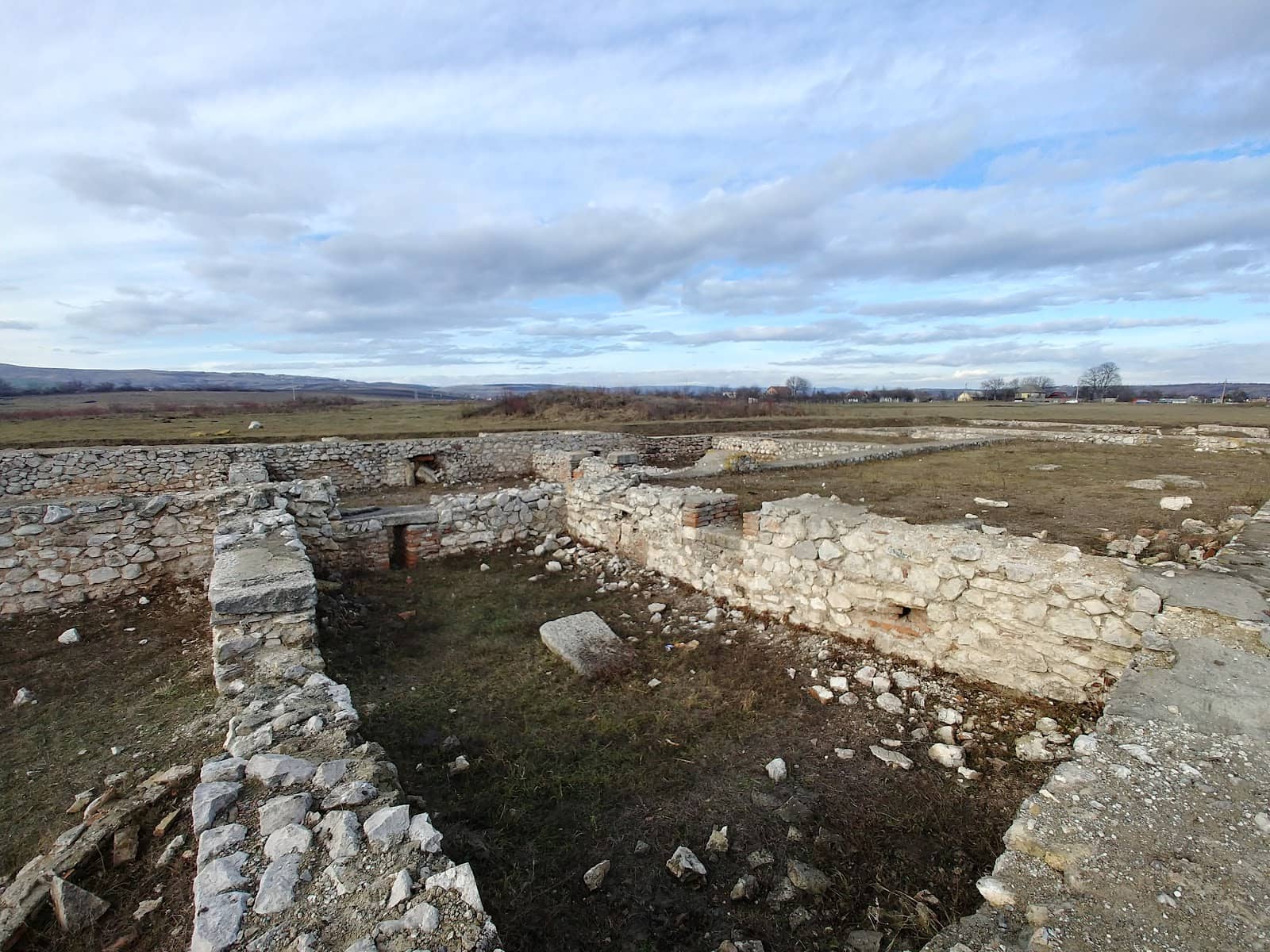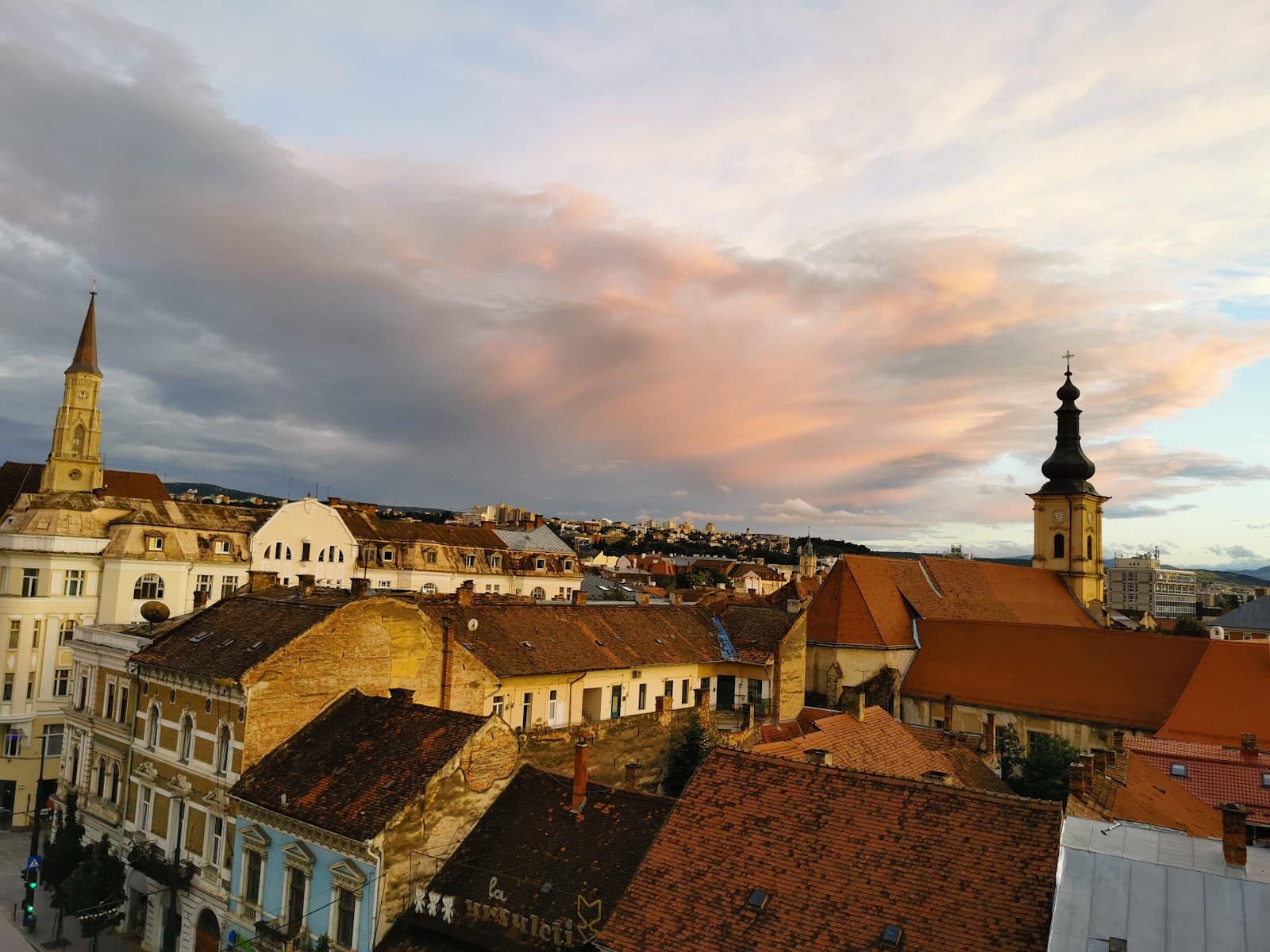
Potaissa Roman Castrum Turda
Explore the authentic, undeveloped ruins of a vast Roman military camp, Potaissa, offering a raw glimpse into ancient history.

Highlights
Must-see attractions

Social
From TikTok & Reddit
Best Time
Avoid midday heat

Potaissa Roman Castrum Turda
Best Time
Avoid midday heat

Highlights
Must-see attractions
Explore the authentic, undeveloped ruins of a vast Roman military camp, Potaissa, offering a raw glimpse into ancient history.
"Incredible experience to walk around the old Roman site and see fragments of history scattered all over the grounds."

👟 Sturdy Footwear Essential
The terrain is uneven and can be overgrown. Comfortable, closed-toe shoes are a must for exploring the ruins safely .
💧 Bring Plenty of Water
The site is exposed with little shade. Stay hydrated, especially during warmer months .

Highlights
Discover the most iconic attractions and experiences

Ancient Roman Foundations
The main castrum area
Walk among the scattered remnants of a once-mighty Roman military and civil settlement. Experience history firsthand.

Panoramic Field Views
Surrounding the castrum
Enjoy special, unobstructed views of the landscape from the elevated position of the ruins. A peaceful, scenic spot.

Active Archaeological Excavation
Various sections of the site
Witness ongoing work to uncover and preserve this significant historical monument. See history being unearthed.
Plans like a pro.
Thinks like you
Planning Your Visit
Manage Expectations for a Developing Site
Access and Exploration
Best Times
Insider Tips
from TikTok, Instagram & Reddit
👟 Sturdy Footwear Essential
The terrain is uneven and can be overgrown. Comfortable, closed-toe shoes are a must for exploring the ruins safely.
💧 Bring Plenty of Water
The site is exposed with little shade. Stay hydrated, especially during warmer months.
🚶♀️ Be Prepared for a Walk
It's a bit of an uphill trek to reach the castrum. Enjoy the scenic walk to the historical site.
🧐 Embrace the Authenticity
This is an active archaeological site, not a polished museum. Appreciate the raw historical experience.
Tips
from all over the internet
👟 Sturdy Footwear Essential
The terrain is uneven and can be overgrown. Comfortable, closed-toe shoes are a must for exploring the ruins safely.
💧 Bring Plenty of Water
The site is exposed with little shade. Stay hydrated, especially during warmer months.
🚶♀️ Be Prepared for a Walk
It's a bit of an uphill trek to reach the castrum. Enjoy the scenic walk to the historical site.
🧐 Embrace the Authenticity
This is an active archaeological site, not a polished museum. Appreciate the raw historical experience.
🚧 Check for Restoration Updates
The site is under development. Future visits may offer a more complete experience.
What Travellers Say
Reviews Summary
Visitors find Potaissa Roman Castrum to be a site of immense historical potential, offering an authentic glimpse into Roman Dacia. While its undeveloped state and overgrown conditions are noted, many appreciate the raw, unsupervised exploration and the chance to see active archaeological work. The scenic location and the feeling of discovering history are significant draws, though the lack of amenities and upkeep is a common point of disappointment.
"The site was a disappointment. It is not really exploited, not even in a minimal way. Just a little info on a sign which fell down. On that sign it says that it is one of the greatest antiquity monuments in Romania, that's such an irony, considered how it is NOT administered by authorities. This could be such a wonderful place: it had hosted 5000 legionnaires and it had military and civil buildings. Huge tourist potential!"
SVC
"Insane that these relics have been left unsupervised in the middle of the field. Incredible experience to walk around the old Roman site and see fragments of history scattered all over the grounds.
Bit of a walk uphill to find them but some honestly special views. Make sure you bring some water as the ruins are in the middle of a field and it gets very hot in the summer months."
John-J Anderson
"The walk up to this place was more enjoyable than the site itself. It looks like some excavation and possibly restoration were taking place as much of the area was roped off and several workers were scattered about with shovels and earth movers. I’ll come back next summer to see if any progress has been made."
rick ibarra
What People Like
What People Dislike
Frequently Asked Questions
🚇 🗺️ Getting There
The castrum is located on a hill outside of Turda. While official access points might be limited, some visitors have found ways through fences. It involves a walk uphill from the nearest accessible point. Consider using a local taxi or ride-sharing service to get as close as possible before walking the rest of the way.
Dedicated parking is not widely advertised. Visitors typically park in Turda and walk to the site, or use transport that can drop them off at a suitable starting point for the uphill trek.
The site is spread out and consists of foundations and scattered ruins. Wear sturdy shoes and be prepared to walk over uneven ground. There aren't formal paths throughout the entire area.
🎫 🎫 Tickets & Entry
Information on ticketing is scarce, and the site appears to be largely unsupervised. Some visitors have noted finding ways through fences when gates are locked, suggesting it may be freely accessible or in a state of development where formal ticketing isn't yet implemented.
As an archaeological site undergoing development, there are no official published opening hours. Access may be possible at any time, though it's advisable to visit during daylight hours for safety and visibility.
Due to the uneven terrain, overgrown areas, and uphill access, the site is likely not suitable for individuals with significant mobility challenges. It's an authentic archaeological field experience.
🎫 🧭 Onsite Experience
You can explore the foundations and scattered remnants of a large Roman military camp that once housed 5,000 legionaries. It includes evidence of military and civil buildings, offering a glimpse into Roman life.
Reviews indicate the site is in a poor state of conservation and overgrown with grass. While excavations are ongoing, it's not a fully restored attraction.
Bring water, especially in summer, as there are no facilities. Comfortable walking shoes are essential for navigating the terrain. Sun protection like a hat and sunscreen is also recommended.
Yes, photography is generally allowed. The site offers unique opportunities to capture images of ancient ruins in a natural, undeveloped setting.
No, there are no facilities at the Potaissa Roman Castrum itself. It's a remote archaeological site, so plan accordingly and use facilities in Turda before you go.
📸 📸 Photography
Capture the raw, scattered foundations against the backdrop of the surrounding fields and hills. The unmanicured nature of the site offers a unique, authentic feel for historical photography.
Early morning or late afternoon light can create dramatic shadows and highlight the textures of the ancient stones. Avoid midday sun for softer lighting.
Drone usage regulations can vary. It's advisable to check local drone laws and consider the privacy of any workers or nearby residents before flying.
For Different Travelers
Tailored advice for your travel style
👨👩👧 Families with Kids
Consider framing the visit as an 'archaeological treasure hunt.' Encourage kids to look for different shapes of stones or imagine what each foundation might have been. The lack of crowds can make it a more relaxed experience for families. While there are no specific child-focused amenities, the raw historical environment itself can be an engaging educational tool.
🚶 Budget Travelers
Pack your own food and water to avoid purchasing expensive items nearby. The experience is about exploration and discovery, making it a rewarding visit without significant expenditure. The authentic, undeveloped nature of the site adds to its charm for those who prefer raw historical sites over commercialized attractions.
Deep Dives
In-depth insights and expert knowledge
The Historical Significance of Potaissa
Archaeological findings at the site reveal a complex layout with barracks, administrative buildings, and evidence of a surrounding civilian settlement (vicus). The ongoing excavations are vital for understanding the daily lives of Roman soldiers and their families, as well as the broader impact of Romanization on the local population. The site's potential for historical tourism is immense, offering a tangible connection to Romania's Roman past.
Despite its historical weight, the site's current state of conservation is a concern. Visitors often note that it's overgrown and not fully developed, presenting a raw, authentic experience rather than a polished attraction. This presents a unique opportunity for those interested in archaeological fieldwork and the preservation process itself, as much of the area is actively being worked on.
Navigating the Unspoiled Ruins
Many visitors mention the uphill walk to reach the castrum, describing it as part of the experience. While official access might sometimes be restricted, some have found ways to explore the grounds, highlighting the site's developing nature. It's advisable to bring your own water and snacks, as there are no facilities on-site. The lack of crowds, especially during off-peak hours, allows for a more personal and contemplative exploration of this ancient Roman settlement.
For photographers, the unmanicured landscape provides a unique canvas. The interplay of ancient stones with the natural environment, especially during the golden hours of sunrise or sunset, can yield stunning images. The feeling of discovering history in situ, without the usual tourist infrastructure, is a significant draw for many who visit Potaissa Roman Castrum.






Social
from TikTok, Instagram & Reddit